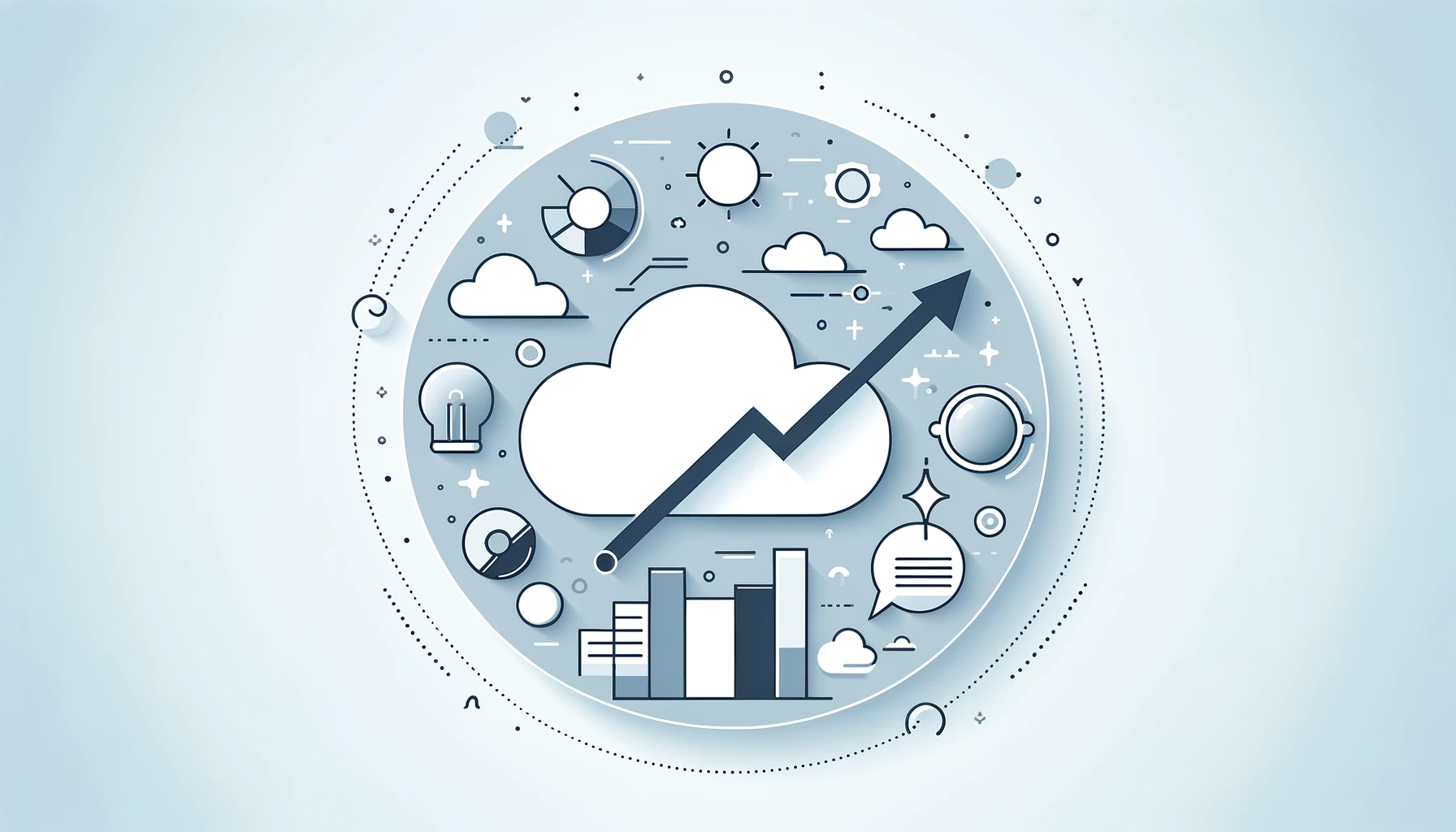Competition in the tech space can be brutal. With so many services being offered in the cloud, geography is no longer a limiting factor. Products, services, and features have become less differentiating and forced tech companies to compete more on price. This cuts margins and profitability.
It’s also become a high stakes game as engagements are more often based on long-term relationships rather than one-time sales. If you miss an opportunity now, it may be gone for good.
At the same time, tech buyers in the B2B industry are under more pressure than ever to make the right decisions since it may have a long-lasting impact. They have to get it right and deliver ROI to their stakeholders. They’re taking longer to make buying decisions. Even when you’ve moved someone from a prospect to a sales-qualified lead, more than half aren’t ready to buy according to Gleanster Research.
They need more education to build up their confidence. Nearly half of buyers will view as many as five pieces of content before reaching out to a salesperson.
These are just some of the reasons why you need to master inbound marketing to grow your tech business.
Table of Contents
ToggleMap Buyer Personas
The key to creating inbound marketing content that converts is understanding your prospects intimately for effective tech marketing. This is especially true for B2B tech companies with complex, and often lengthy sales cycles. When you know what keeps your target market up at night and can deliver solutions to make their job easier, you’re better positioned to make the sale.
From a marketing standpoint, you need to develop buyer personas. This helps you determine what content to create, the style and tone to use, and the distribution channels you need to use.
Typical buyer personas might include:
- Demographic information
- Title
- Goals
- Challenges
- Pain Points / Objections
- Buying triggers
This helps you craft your marketing message through the eyes of your buyer instead of relying on your list of features.
Employ an Account-Based Marketing (ABM) Approach
97% of marketers report higher ROI using Account-Based Marketing strategies compared to any other marketing initiatives.
Account-Based Marketing is a B2B strategy focusing sales and marketing efforts on high-value target accounts. Unlike a broad-based marketing campaign that targets large audiences or buyer personas, ABM goes deeper to identify key targets and markets custom campaigns against a very narrow list. By starting with understanding the preferred companies you want to work with, you can begin to understand what makes that organization “tick”. In doing so, you are able to personalize your B2B marketing message in ways traditional methods simply can achieve.
ABM identifies high-value prospects at specific companies. Marketing messages are targeted at prospects to drive them through the various stages of the purchase funnel. The content provides valuable information for your target customers that can help them discover your brand.
This works well in B2B marketing strategies where the sales cycle is long and works more effectively for high-ticket products. That’s what Adobe found through customer targeting ABM in conjunction with LinkedIn. Adobe reports it closed 42% more deals from ABM campaigns and deals were 161% larger than average
ABM improves customer relationships before, during, and after the sales process.
Create Downloadable Offers
Downloadable offers have two goals in most cases:
- Provide valuable content to build trust in your brand
- Lead generation
Downloadable offers and gated content allow tech companies to gather email and provide opportunity for additional marketing opportunities. It can provide an automated way to collect information about prospects that have an interest in your products or services and get them into your funnel for nurturing.
It can also provide insights and analytics about your potential customers and aid in email list segmentation for your inbound marketing strategies.
Effective types of downloadable offers include content such as:
- Fact sheets
- Product brochures
- Case studies
- Whitepapers
- eBooks
- Sample templates
- Webinars
- Special offers or coupons (if applicable)
- Videos
An example of an effective downloadable offer comes from Gartner. It’s Big Book of Buyer Behavior talks to technology companies about their target customers and warns about making flawed assumptions that risk driving up costs. Online payment service Stripe takes a different approach by offering a library of downloadable content on customer engagement and product management.
Lower the Barrier of Entry
You want to get the customer as close to the solution as possible right away.
Once you’ve established the need and gained an understanding of the customer’s problems, showcase the solution in a variety of ways: text, images, slideshows, videos, or self-serve demos. Make it a low barrier of entry for buyers to understand how you solve their problems.
If you’re a SaaS platform, you might consider a free trial of the platform. Shopify is a good example of using a 14-day free trial to dramatically grow its subscriber base. It provides a full feature set without limitations. After launching free trials, small business owners were able to set up their eCommerce stores and start selling right away. This strategy was part of the reason Shopify grew by 10x in three years.
Any way you can reduce friction with your B2B inbound marketing will help. If what you’re trying to do is get someone to sign up for your newsletter, ask for their email. Don’t require them to provide additional details at that time. As they move up the value ladder, you can fill in the details later.
Use the Value Ladder
As B2B buyers become more aware of your products and services and engage with your content and brand, trust and credibility begin to be established. However, it takes time. Nobody goes from the first contact to making important buying decisions without undertaking the process in between.
Russell Brunson calls this the Value Ladder. For inbound marketing for technology companies, the concept is to nurture prospects throughout the buying journey one step at a time. As B2B buyers become more comfortable with your brand, you can move them up in the journey to the next step. To be effective, you’ve got to deliver content with value at each state while ensuring its right content for whatever level the buyer is on the value ladder.
Automate Lead Nurturing
Nearly a quarter of sales are lost because sales reps fail to engage buyers through the entire sales process. When brands aren’t providing ongoing value, it’s logical that the buyer does not feel an obligation to maintain a dialogue.
One way to resolve this is by using automation. Marketing automation platforms allow brands to deliver the right content at the right time and it does it at scale. While maintaining relationships, automation keeps funnelling quality content to prospects to lead them through the buyer journey at their own pace. When they’re ready to move to the next step on the value ladder, automation delivers the right content to move them.
Along the way, you’re building trust and brand advocacy while gathering data to evaluate buyer intent and optimize future campaigns.
Automating lead nurturing lets your sales team focus on the highest-level prospects.
Create Virtual Events
During the pandemic, people have become more comfortable doing business virtually than ever before.
With in-person events being put on hold, shifting to virtual events has become more the norm and there are benefits. It’s reduced cost for industry conferences and increased attendance. 80% of marketers hosting virtual events in 2020 report they reached wider audiences and increased ROI. A study by Intrado found that 20% of attendees viewed on-demand, which increased overall participation.
Tech companies can put together virtual events and panels as part of their content marketing and buyer education strategies. You may be able to attract high-quality speakers since travel is no longer an impediment. Overall, the cost is low and the tech is readily available.
Another advantage of creating virtual events is that you can use the material you’ve developed, including the live session recordings, as additional content. Converting it into blogs, Whitepapers, and eBooks can create support material.
HubSpot’s Inbound 2020 is a great example of an in-person event that had to pivot to virtual and did so really successfully. While we don’t expect you to create your own virtual event platform as HubSpot did (WOW!), there are many key things we can learn from them.
- Virtual events can be fun, engaging, and foster community conversation
- On-demand content is WINNING. Some people don’t want to (or can’t) attend the conference live. Registrations and engagement will increase if you make it clear they will have access to the recordings after the event.
- Planning goes out the window as soon as a live event starts. Have your team on standby and be ready to answer the inevitable “Why I can’t hear you” question. HubSpot representatives were available All. The. Time. to answer any questions during each speaker session.
Launch a Comprehensive Inbound Marketing Plan
All of these strategies for tech companies should be part of your comprehensive inbound marketing plan to grow your company. The right inbound marketing strategies for tech can help you cut through the clutter in the crowded tech marketplace.
It can help you hone in on your target prospects and high-value buyers. This will increase your generation of sales-qualified leads and cut down your marketing costs that might otherwise be wasted.
If you’re trying to get an understanding of how much inbound marketing costs, we’ve put together these tips to help you better estimate the cost of inbound marketing. If you’re looking for a dedicated group of inbound marketing experts to help you grow your business, get in touch with the team at Riverbed Marketing.











